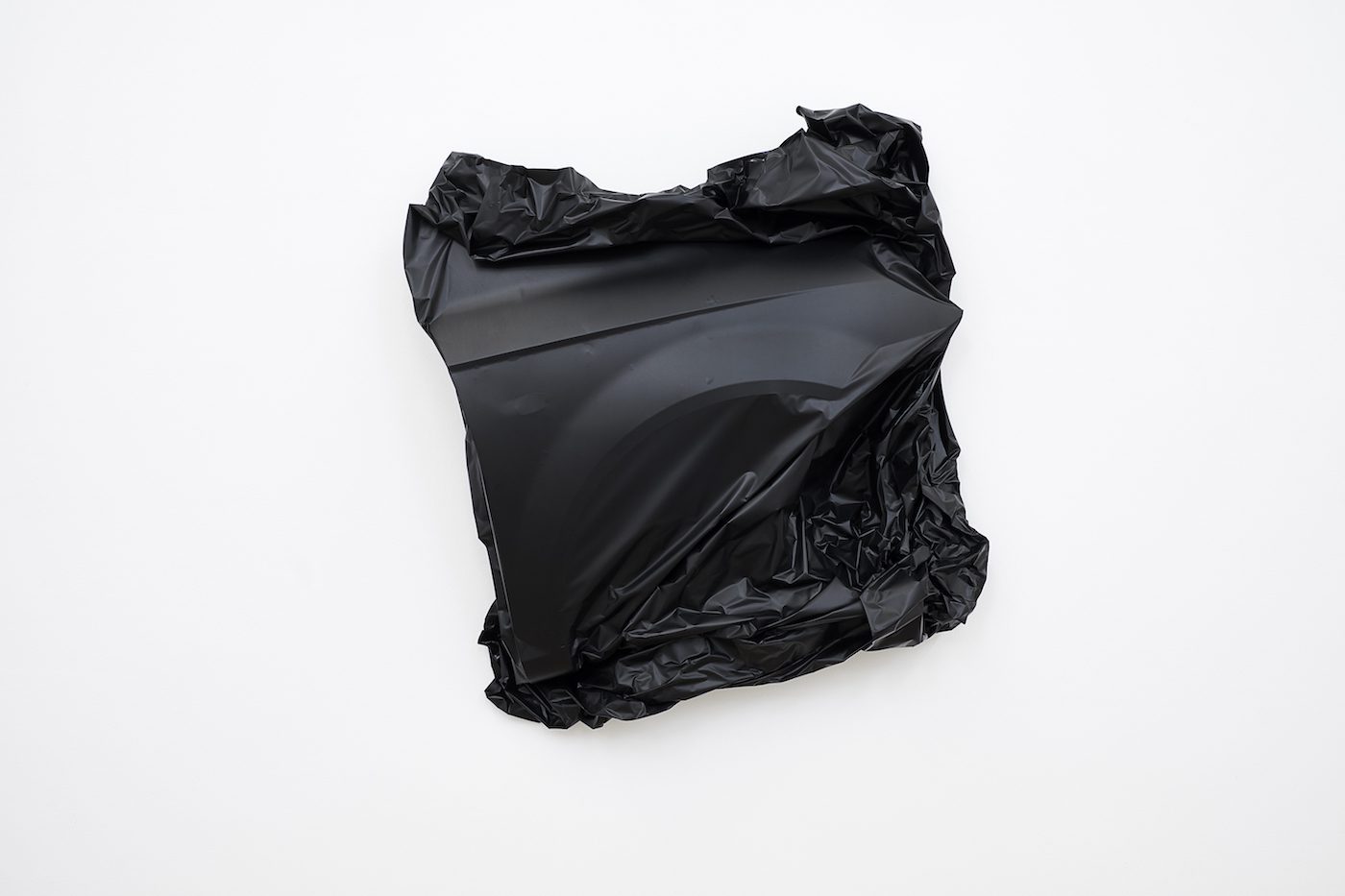Unathi Mkonto is a South African artist who creates erotic sculptural works that explore architectural and fetish elements. His current exhibition Flat shows a series of “anatomical constructions” made of car parts and sleek black vinyl, which play with the idea of tailoring objects. As the show comes to an end, C& speaks to the artist about eroticism and creating a singular new vision for fashion, architecture, and art.

Unathi Mkonto, Presentation 1 (fitting 2) (2018) | Vinyl, mild steel, approx. 120 x 110 x 24 cm
Contemporary And: Could you talk me through the concept of your show at Blank Projects?
Unathi Mkonto: We are at an important moment in history in which body construction, pigmentation, is an everyday thing. Flat refers to the core of an object that is flat, not vertical, maybe meaningless. As an artist I am interested in new anatomical constructions while exploring the idea of tailoring; not on the body but on found materials.
C&: Why did you choose these particular materials to work with?
UM: I want participate in furthering the discourse rather than making work for everyday survival on the continent. Hence the car parts, which exists throughout the world. The black vinyl is the human skin polished to perfection, the car parts are the core of the body. Personally there is a sense of danger for me, working with this material, like not being in control when inside a car. I want the work to be erotic, that’s what I’m into.

Unathi Mkonto, Flat, Installation view at Blank Projects 2018. Courtesy the artist and Blank Projects.
C&: How did you begin melding fashion and architecture?
UM: When I was young I was particularly interested in both terms, but I’m past all that.
I’m interested in how far we can go and if our bodies are enough. Sexual fantasies are endless; and the craving for human connection that I often experience with fetish fashion.
My early drawings were mark making with lines and shapes from fashion and architecture.
The work is still informed by lines and surfaces which are at the core of what fashion and architecture is.
C&: When does fashion become architecture and vice versa?
UM: I feel the sooner we move past these ideas and create new terms the better. I studied architecture ten years ago – it was a lot, and they probably don’t want to hear from me again. I like to get to the core and move on from meaningless conversations around it.
They are both the outermost layers. The answer is: What is the function of architecture but most importantly the core the earth? I’m interested in the mystery of why we exist. The objects I create have been given a new purpose.
I guess we all have an idea of what shelter and agency are in Africa.
Culture has informed architecture throughout history and is still defining fashion.
The work is about the fundamental elements of space and taking a deeper look at that.
C&: What’s your Boys of South Africa project about and how did it begin?
UM: It is photographs of people I am interested in. Most people came to me for head shots, that also worked for me.
At the beginning it was a lot about the composition and people. Then I started looking at places, which has led me to the “anatomical constructions” body of work.
C&: What are you currently working on and what’s next for you?
UM: Well, the real truth is I’m working on myself always, the person owns knowledge of who they are.
Creating a new line which has a singular vision for fashion, architecture, and art.
Unathi Mkonto, FLAT, continues at Blank Projects, South Africa until 25 November 2018.
Unathi Mkonto was born in Peddie, Eastern Cape and is now based in Cape Town. He studied architecture at Nelson Mandela Metropolitan University (NMMU) and then trained in fashion. He is a self-developed multidisciplinary artist who works between fashion and architecture.
Interview by Will Furtado.
More Editorial